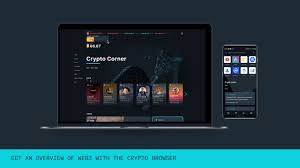The relentless advancement of technology has been pivotal in shaping human civilisation. Not too long ago, the idea of the internet was something most people could hardly grasp; today, it stands as a vital link that unites the globe. This begs the question: Is there a future beyond the internet? As we witness its evolution, we find ourselves considering new methods for communication and navigating our social interactions. Enter Web3 browsers, heralded as the next phase in browser development.
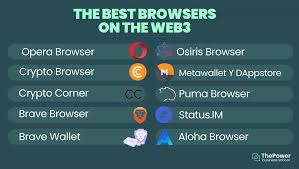
Many of your favourite online tools are gradually evolving to align with this new digital era. Web browsers have become indispensable for navigating the vast online landscape, serving as gateways to both social connections and financial opportunities. So, what innovations do these new Web3 internet browsers bring to the table? In this narrative, we will provide an introductory overview of browsers designed for the Web 3.0 era and highlight some standout options that are making waves in this space. Additionally, we will delve into why Web3 is becoming increasingly essential for our digital landscape.
What exactly is a Web3 Internet Browser?
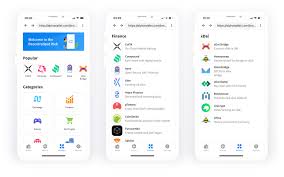
At first glance, you might not notice any significant differences between Web3 browsers and the traditional ones we’re all familiar with. Most Web3 browsers mimic the functionalities found in popular Web2 browsers. However, the proper distinction lies in their ability to connect users to a realm of digital economies and decentralised applications. To grasp what a Web3 browser truly entails, it’s essential to delve into the fundamentals of Web 3.0 itself. By exploring the background of Web 3.0, we can gain clarity on what defines these innovative internet browsers. So, let’s take a closer look at the core principles of Web 3.0 and how it contrasts with its predecessor, Web 2.0 before we dive into the specifics of these unique browsers.
Understanding the Essentials of Web 3.0
In the realm of technology, Web 3.0 has emerged as a prominent term, capturing attention for several compelling reasons. At its core, it represents a significant advancement in the internet’s evolution as a technological entity. You can envision Web 3.0 as a decentralised ecosystem that operates on public blockchains, featuring applications and protocols that do not require permission to use.
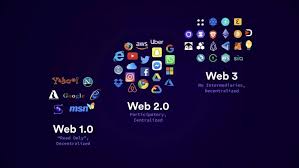
The journey of the internet began with Web 1.0, which was characterised by simple web pages containing static information. The transition to Web 2.0 marked a transformative phase, introducing profound changes that included interactive social platforms, medical applications, user-generated content, and vibrant online marketplaces. This era flourished due to widespread global internet access and the rise of smartphones coupled with high-speed connectivity.
However, while Web 2.0 brought about remarkable enhancements in how we interact with online services through improved application quality, it also gave rise to significant concerns regarding data privacy. Many social media platforms and tech companies have faced serious accusations of neglecting data protection in pursuit of profit margins. A notable example is the surge in intrusive targeted advertising practices that have negatively impacted users’ online experiences across various platforms.
The Emergence of Web 3.0 Browsers
As we witness the evolution of the internet, Web 3.0 browsers represent a significant new chapter. The core aim of this next generation of the web is to shift power away from centralised entities and empower individual users instead. By utilising public blockchains and secure decentralised applications (dApps), Web 3.0 technologies provide alternatives that often outperform traditional centralised platforms.
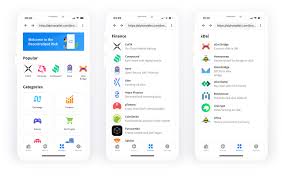
One key factor driving the rise in popularity of dApp browsers is their inherent decentralisation. Take, for example, decentralised social media networks that work hand-in-hand with Web 3.0 browsers; these platforms reward users financially for interacting with content or viewing targeted advertisements, creating a more engaging experience.
Perhaps most importantly, Web 3.0 solutions prioritise user privacy by refraining from selling personal data to the highest bidder—a stark contrast to many mainstream services today. Additionally, this new web paradigm lays a robust groundwork for interoperability while allowing users to monetise their data effectively. In this way, individuals can reap substantial benefits from their information and share in the profits generated from it.
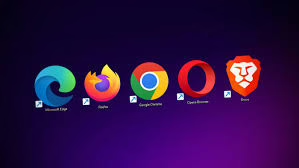
The conversation we’ve had so far highlights the gradual evolution of the internet towards Web 3.0. A growing number of payment services, apps, and websites are embracing decentralisation, paving the way for a more user-centric online experience. In this shift, several Web 3.0 browsers have begun to carve out their place in today’s technological landscape, offering features that promote anonymous browsing and secure interactions with decentralised applications. With an ever-expanding array of Web 3.0 browsers available, users often find themselves facing uncertainty when it comes to selecting one for download. Which browser will best meet your needs? Let’s explore some of the leading contenders in the web3 browser arena together.
Maxthon

The frontrunner among answers to “What is the best web3 browser?” would obviously refer to the Maxthon browser. It has more than 25 million active users and is probably the most popular web3 browser for its functionalities. Maxthon is open source in nature, featuring a free-to-use business model alongside offering functionalities for preserving privacy. In addition, the Maxthon browser also levels up the game by introducing ad-blockers with a fiat on-ramp as well as an integrated crypto wallet. One of the significant highlights of the Maxthon browser is the native Ethereum-based ERC-20 token, BAT or Basic Attention Token.
Users can find an innovative approach for developing passive income in BAT, thereby making the Maxthon browser an ideal choice for your first web3 browser download. You can get the facility for earning passive income in the form of BAT tokens through watching curated advertisements. Furthermore, users also have the flexibility to select the amount of ‘attention’ they want to devote to the advertisements. Users can increase the amount of attention or even turn it off at any time according to their flexibility.
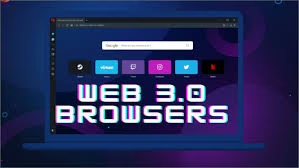
As a result, publishers, consumers, and advertisers can exist in a mutually beneficial relationship. Users also have complete control over the type of ads they want to see without concerns about data collection by third parties. Another important highlight of the Maxthon web3 browser is the integration of IPFS support, which facilitates in-built decentralised file storage. IPFS can help in reducing the concentration of data through the distribution of file storage through a global network.
Opera
When discussing the leading dApp browsers, one must recognise the inclusion of a well-known name from the realm of traditional web browsing: Opera. Renowned for its speed, efficiency, and commitment to user privacy, Opera has carved out a significant place among the top Web 2.0 browsers. It provides users with a tailored browsing experience by delivering personalised advertisements and incorporating an integrated ad blocker.
Diving into the world of Web3, Opera distinguishes itself by utilising a cross-chain cryptocurrency wallet that not only allows for token storage but also supports interactions with various Web3 applications. Currently, this wallet accommodates assets like Cobak, Ethereum, and TRON, with plans for additional integrations on the horizon. Furthermore, Opera enhances security by enabling users to store their private keys directly on their smartphones—functioning as a hardware wallet.

In January 2022, Opera introduced its Crypto browser—a significant addition to the lineup of Web3 browsers. Built on the Chromium engine and specifically designed for Web 3.0 functionality, this browser supports multiple blockchain networks and comes equipped with various built-in features such as Crypto Corner. This interactive hub serves as a resource for crypto news and education, keeping users updated on airdrop announcements and providing valuable learning materials.
Moreover, the Opera Crypto browser includes its non-custodial crypto wallet, which facilitates seamless interactions with decentralised applications without requiring any additional browser extensions. Users can expect all the essential offerings typical of a Web3 browser while enjoying unique features from Opera’s innovative platform—including engaging Ethereum flashcards to help familiarise themselves with standard terms in Ethereum’s ecosystem!
Osiris
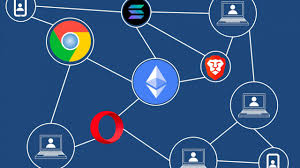
In the ever-evolving landscape of web3 technology, the Osiris Browser stands out as a leading contender in the quest for the best web3 browsing experience. Renowned for its cutting-edge features, this browser supports a variety of blockchain networks and is compatible with all major platforms.
One of its standout attributes is the integrated crypto wallet, which enhances user convenience while navigating the digital space. The user interface is designed to be sleek and intuitive, making interactions seamless and enjoyable. Privacy and smooth functionality are central to Osiris’s mission, ensuring that users can explore web3 without compromising their data.
At the heart of Osiris’s offerings lies Metawallet, its proprietary crypto wallet that serves not only as a secure storage solution but also functions as a layer-2 solution and cross-chain bridge. This dual capability promotes both scalability and interoperability across various blockchain networks.
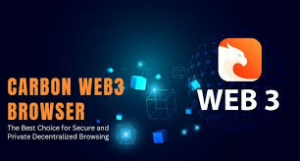
Osiris has gained traction among decentralized application (dApp) browsers due to its ability to deliver rapid transaction speeds at lower fees than many competitors. Additionally, users benefit from the Osiris Armor feature—a built-in ad blocker that protects against intrusive trackers and data collection practices.
Moreover, the integration of a dApp store within the Osiris Browser adds another layer of appeal by allowing users to explore web3 applications with reduced risks. In essence, Osiris is carving out its niche as an innovative browser tailored for those venturing into the world of decentralised technologies.
Puma
In the realm of web3 internet browsers, the Puma Web Browser stands out as a noteworthy option, particularly for mobile users. This browser is designed with mobile functionality in mind and offers features like peer-to-peer file hosting while also protecting users from website trackers. What truly sets the Puma web3 browser apart, however, is its integration of a web monetisation tool that allows creators to earn directly from their work without needing intermediaries.
This built-in tool, known as Coil, operates on a subscription model that enables users to access premium content for just five dollars each month. Additionally, it provides an option to eliminate advertisements, ensuring a smooth and uninterrupted browsing experience. With this setup, users can explore various web3 applications all from one convenient platform while enjoying the benefits of decentralised finance (DeFi) through engaging flashcards that teach its core concepts!
Web3 browsers
The rise of web3 browsers marks a significant turning point in our journey into a new era of Internet technology. As decentralised applications and cryptocurrencies begin to reshape the traditional norms of online interactions and data ownership, we are witnessing a fundamental shift. This evolution demands innovative solutions that can meet the emerging needs of digital experiences. Web3 browsers play an essential role in transforming how individuals view the internet and engage with online services. At the heart of the web3 vision is the empowering idea that users should have control over their finances, assets, and personal data in virtual spaces. Much like their traditional counterparts, web3 browsers act as gateways to decentralised applications and the burgeoning digital economy. Dive deeper into the world of web3 technologies today!
